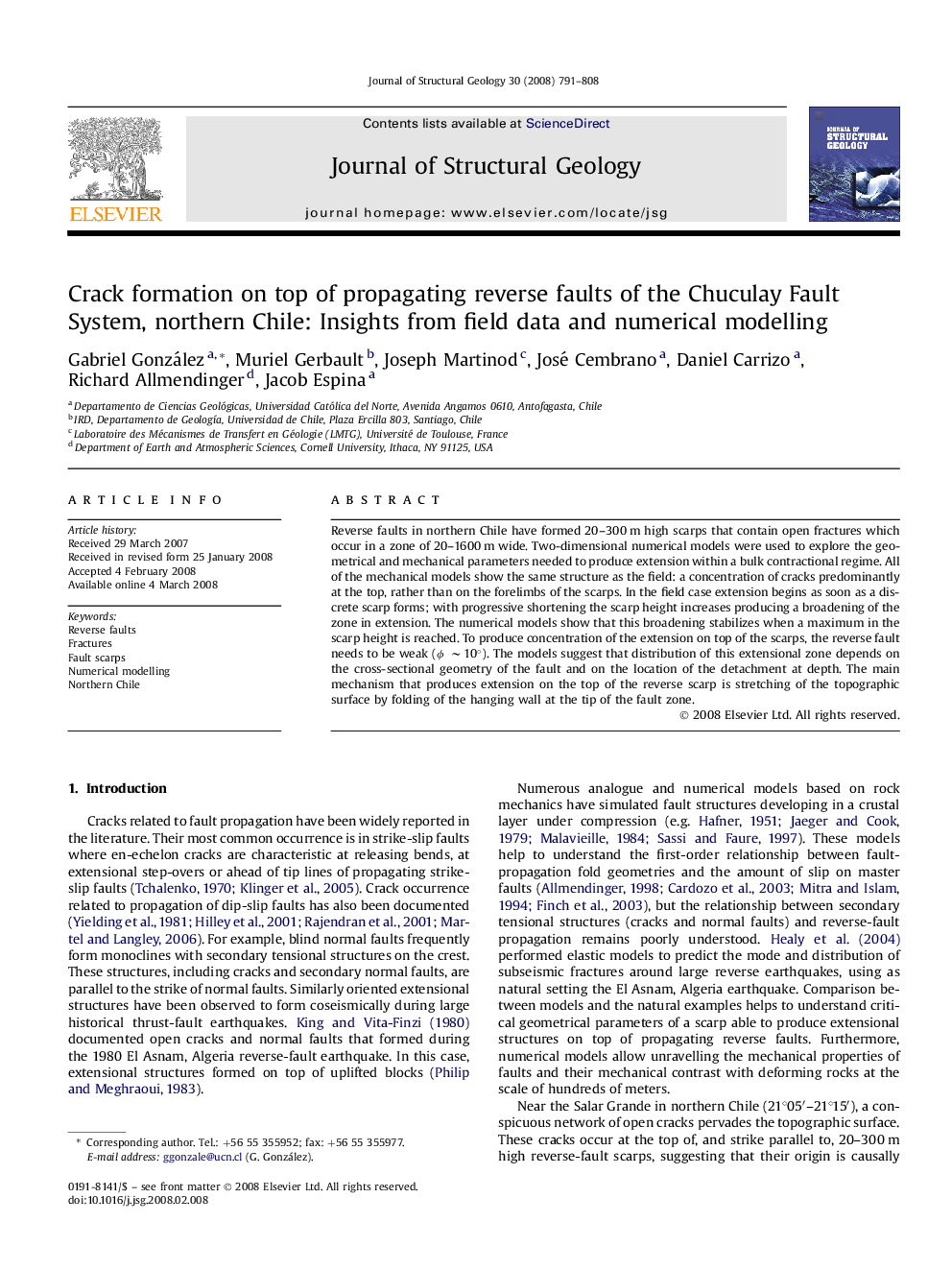| Article ID | Journal | Published Year | Pages | File Type |
|---|---|---|---|---|
| 4733712 | Journal of Structural Geology | 2008 | 18 Pages |
Reverse faults in northern Chile have formed 20–300 m high scarps that contain open fractures which occur in a zone of 20–1600 m wide. Two-dimensional numerical models were used to explore the geometrical and mechanical parameters needed to produce extension within a bulk contractional regime. All of the mechanical models show the same structure as the field: a concentration of cracks predominantly at the top, rather than on the forelimbs of the scarps. In the field case extension begins as soon as a discrete scarp forms; with progressive shortening the scarp height increases producing a broadening of the zone in extension. The numerical models show that this broadening stabilizes when a maximum in the scarp height is reached. To produce concentration of the extension on top of the scarps, the reverse fault needs to be weak (ϕ ∼ 10°). The models suggest that distribution of this extensional zone depends on the cross-sectional geometry of the fault and on the location of the detachment at depth. The main mechanism that produces extension on the top of the reverse scarp is stretching of the topographic surface by folding of the hanging wall at the tip of the fault zone.
